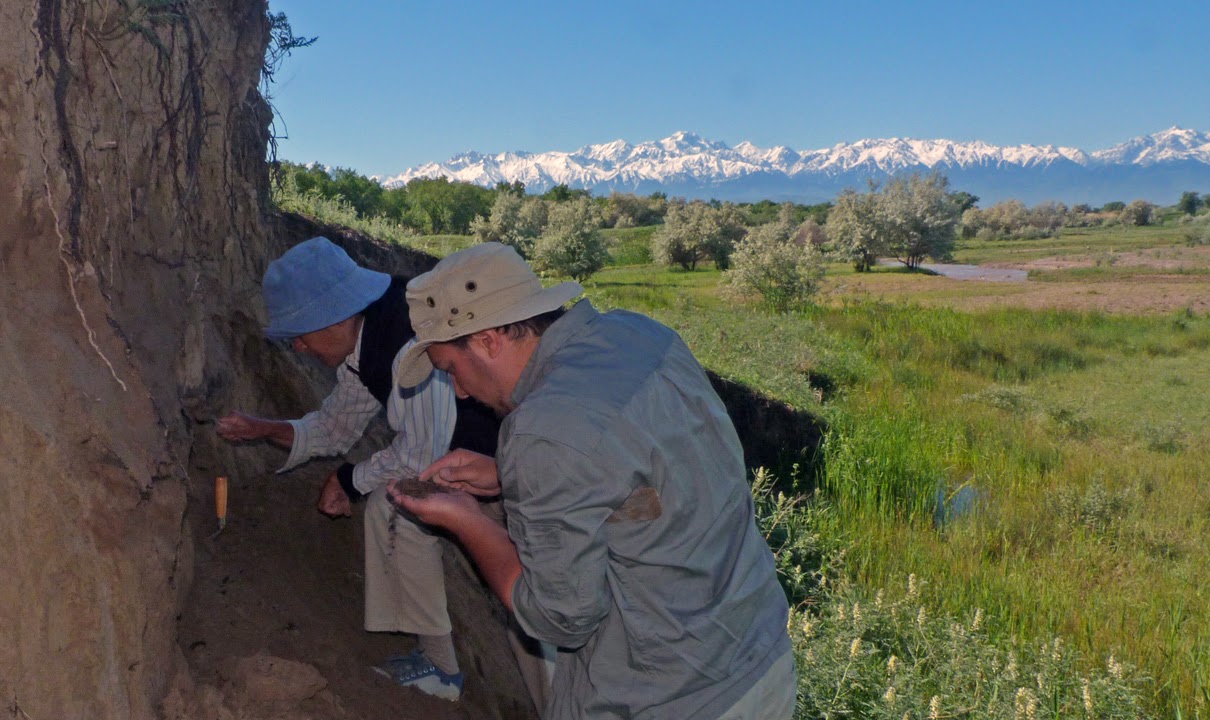Water, Dust, and Agropastoralism
I’m very happy to announce the publication of a new article about the fieldwork we have been conducting in Kazakhstan.
The paper, titled “Water, dust, and agro-pastoralism: Modeling socio-ecological co-evolution of landscapes, farming, and human society in southeast Kazakhstan during the mid to late Holocene,” presents a model of human niche construction on the Talgar alluvial fan in Southeastern Kazakhstan. We tie together models of human land-use, alluvial river deposition, and aeolian dust deposition in a Social-Ecological Systems framework to create a holistic model of how the initial agro-pastoral colonizers who arrived likely in the Early Bronze Age (~2800 BCE) modified the environment of the fan through everyday subsistence decisions. These colonizers brought with them a transported landscape that consisted of a general suite of domesticated resources (wheat, barley, millet, goats, sheep, cattle, etc.) and land-use practices for husbanding these resources (farming, pastoral nomadism, transhumance, etc.). When colonizing new territories, initial populations would take advantage of some of the existing environmental components and niches (such as grasslands created by wild herbivores), and would introduce, replace, or rearrange other environmental components by drawing on portions of their transported landscapes (e.g., replacing wild herbivore populations with domesticated cattle, sheep, and goats). After initial colonization, we use the concept of positive and negative feedbacks between each of these sub-components to explain how those environmental features that make a landscape more amenable to human subsistence can be enhanced over time while other features may be dampened.

The Talgar case study is unique in the broader region of Central Eurasia in that there is abundant evidence that the region was inhabited by sedentary or semi-nomadic agro-pastoralists who farmed wheat, barley, and millet by the Early Iron Age (1100-400 BCE). This is in contrast to other parts of Central Eurasia where it seems that people lived a more nomadic pastoralist lifestyle with little to no agriculture practiced. Our research draws together more than 20 years of archaeological survey and excavation in the Talgar region with new sedimentological research and radiocarbon chronologies of the landscape history of the fan. We demonstrate how the initial colonizers of the fan could have taken advantage of the unique geomorphology of alluvial fan environments to intercept flows of water and sediments with minimal efforts, such as basic checkdams, diversion ditches, and farming in existing low-lying areas. These small changes compiled over time in a positive feedback loop, enhancing soil development and predictability of water resources across the fan to make farming more and more attractive in the region. The fan is situated between steppe resources to the north and the Tien Shan mountains to the south, allowing for seasonal transhumant pastoralism to co-exist with sedentary farming.

In the Talgar case study, these feedback processes led to a very sustainable system of agro-pastoralism that sustained large populations in the region up until large Soviet period mechanized farming and industrial irrigation works broke these connections. Currently, highly technological systems, such as concrete irrigation canals and artificial fertilizers are needed to sustain farming in the area. In the end, our case study provides an example of how models from the natural and social sciences can be combined to better understand how humans can adapt to, and be adapted by, new environments. We hope that lessons for future sustainability in the region and elsewhere can be drawn from the archaeological past.
A copy of the paper can be downloaded from my Academia.edu page.
Citation
Ullah, I.I.T., Chang, C., Tourtellotte, P., 2019. Water, dust, and agro-pastoralism: Modeling socio-ecological co-evolution of landscapes, farming, and human society in southeast Kazakhstan during the mid to late Holocene. Journal of Anthropological Archaeology 55, 101067. https://doi.org/10.1016/j.jaa.2019.101067
Funding
The research was funded through a grant from the National Science Foundation Directorate for Social, Behavioral, and Economic Sciences (grant # BCS-112359), as well as through the SDSU University Grants Program.

Leave a comment